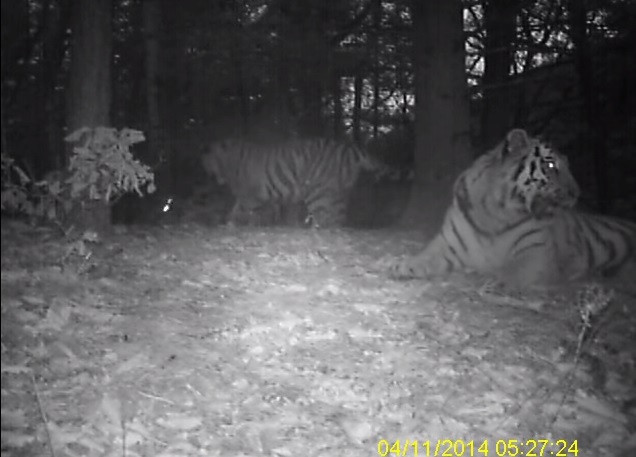Rare footage shows Amur tiger family playing in China

Rare and stunning footage of an Amur tiger family filmed playing in China shows populations are finally returning after decades of conservation efforts.
The mother and her cubs were filmed 30km from the Russian boarder – the first time they have been captured on camera deep into China.
Previously, paw prints were the only evidence Amur tigers were living so far from the Russian border.
Filmed by a WWF camera trap, Professor Jiang Guangshun, executive vice-director of China's State Forestry Administration's Feline Research Centre, said the two cubs in the film are approximately 18 months old.
They were filmed in Wangqing-Hunchun-Suiyang-Dongning Area, which was designated as a priority zone for Amur tiger conservation five years ago.
Since then, tiger prey has been reintroduced and corridors allowing them to move freely have been developed and maintained.
Amur tigers used to be plentiful throughout northern China, the Russian Far East and the Korean peninsula, but they were driven to the brink of extinction through hunting by the 1940s. At this time, no more than 40 individuals remained in the wild.
Now there are an estimated 400 individuals. While most live in Russia, up to 20 are living in the border areas of China. The latest footage shows that populations are now breeding in inland China.
Shi Quanhua, senior manager of the WWF-China Asian Big Cats Programme, said: "This video proves that wild Amur tiger populations are steadily spreading into inland China and are settling down. Many years of conservation work have led to this stunning footage – establishing conservation areas, building a population of prey animals and installing over one hundred infrared cameras in largely inaccessible areas.
"A shortage of prey presented a major threat to wild Amur tigers. We worked to restore the Amur tiger's prey populations through habitat restoration and anti-poaching efforts. Now, with the appearance of this one-of-a-kind video, it's clear that all of the hard work to bring back wild Amur tigers is paying off."
© Copyright IBTimes 2025. All rights reserved.






















